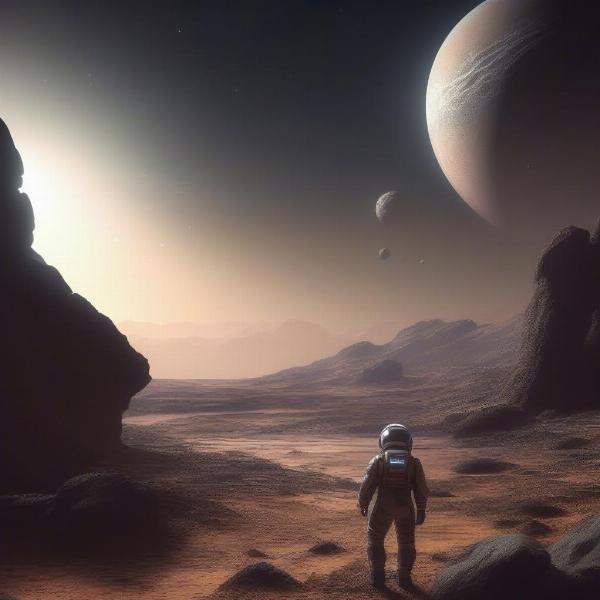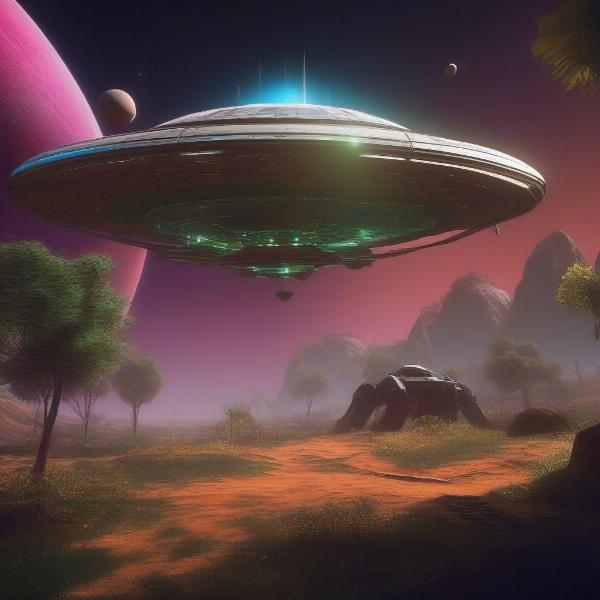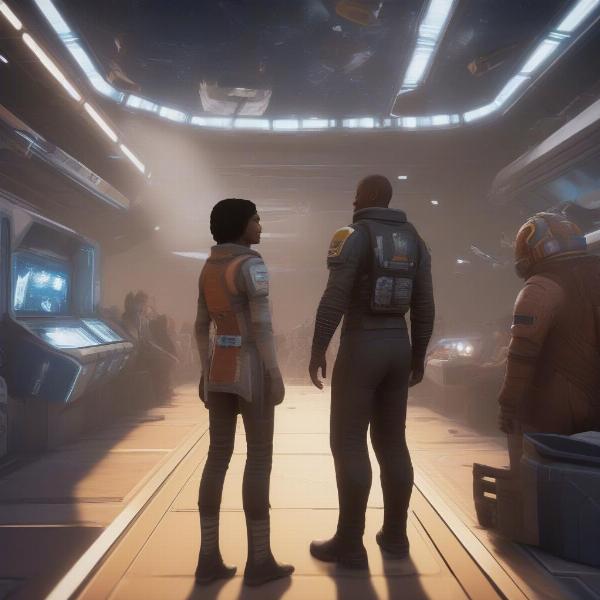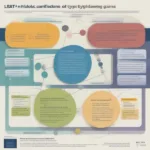Starfield is an open world game, but not in the way you might expect. While it offers vast space exploration and planetary landings, it takes a unique approach to open-world design, blending procedural generation with handcrafted content to create a sprawling, yet curated, experience. So, if you’re wondering just how “open” Starfield’s world truly is, prepare for a cosmic journey into the details.
Exploring the Vastness of Starfield’s Universe
Starfield boasts over 1000 planets spread across numerous star systems. Players can freely travel between these systems and land on any planet they choose. This freedom of exploration is a core element of the game’s open-world design, offering a sense of scale and discovery rarely seen in other titles. But it’s important to understand the nuances of this open world. It’s not a seamless, unbroken experience like some other open-world games. Instead, it utilizes a system of loading screens when transitioning between space travel, planetary landing, and specific locations.
Understanding Starfield’s Unique Open World Structure
So, while you can technically land anywhere on a planet, the exploration on foot is confined to a specific landing zone. These zones are still vast and filled with points of interest, resources, and opportunities for adventure. Think of it as having numerous, large open areas on each planet, rather than one continuous, explorable surface. This approach allows for greater detail and a more focused gameplay experience within each zone.
Starfield’s approach to open-world design is all about offering breadth and depth. You have the freedom to choose your path, explore a multitude of planets, and engage with a rich narrative. The game encourages exploration and discovery, offering a diverse range of environments, challenges, and stories.
 Starfield Open World Exploration
Starfield Open World Exploration
How Does Starfield Compare to Other Open World Games?
Starfield differentiates itself from traditional open-world titles by focusing on curated experiences within its expansive universe. Unlike games that offer completely seamless worlds, Starfield utilizes loading zones to transition between different areas. This allows the developers to craft more detailed and diverse environments without compromising performance. Think of it as exploring a vast galaxy of interconnected sandboxes, each brimming with its own unique content.
Is Starfield’s Open World Right For You?
If you’re a fan of exploring vast, procedurally generated worlds, embarking on epic space adventures, and uncovering hidden treasures, then Starfield’s open-world design is likely to appeal to you. While it may not be a completely seamless experience, the sheer scope and variety of planets and locations to discover are truly impressive.
“Starfield’s open-world structure allows for a level of detail and environmental diversity rarely seen in space exploration games,” says Dr. Amelia Reyes, a leading expert in game design and virtual world development. “The focus on curated content within distinct zones allows for a richer, more engaging experience.”
 Starfield Space Travel and Planetary Landing
Starfield Space Travel and Planetary Landing
Delving Deeper into Starfield’s Gameplay Mechanics
Starfield’s gameplay is built around space exploration, planetary landing, and engaging with the various factions and storylines scattered across the galaxy. The open-world design allows players to pursue their own objectives, whether it’s becoming a renowned space explorer, a powerful pirate, or a skilled trader. The choices are vast and the possibilities seemingly endless.
Tips for Navigating Starfield’s Open World
- Utilize your scanner to identify points of interest, resources, and potential dangers.
- Upgrade your ship and equipment to enhance your exploration capabilities.
- Engage with the various factions to unlock new quests and storylines.
- Don’t be afraid to explore off the beaten path, you never know what you might discover.
“Starfield’s open-world gameplay provides a canvas for players to create their own unique spacefaring narratives,” adds Alex Montero, a veteran game journalist and space exploration enthusiast. “The blend of procedural generation and handcrafted content ensures a constantly evolving and surprising experience.”
 Starfield Player Interacting with NPC
Starfield Player Interacting with NPC
Beyond the Stars: Crafting Your Story in Starfield
The open world of Starfield isn’t just about exploring vast spaces; it’s about crafting your own narrative within this universe. The game offers a deep and engaging story, with branching paths and multiple outcomes, allowing you to shape your destiny amongst the stars. This level of player agency is a key component of what makes Starfield’s open world so compelling.
Starfield’s Open World: A Universe of Possibilities
Starfield’s unique approach to open-world design provides a captivating blend of freedom and curated content, offering players a vast and engaging universe to explore. While it may not be a seamless open world in the traditional sense, it offers a distinct and compelling experience, perfectly suited for those who crave exploration, discovery, and the thrill of forging their own path amongst the stars. So, strap in, prepare for launch, and get ready to experience the wonders of Starfield’s open world.
FAQ
- Can I seamlessly explore entire planets in Starfield? No, planetary exploration is contained within designated landing zones.
- How many planets are there in Starfield? Over 1000 planets across various star systems.
- What kind of activities can I do in Starfield’s open world? Explore planets, engage in space combat, trade resources, interact with factions, and follow various storylines.
- Does Starfield have a main story? Yes, Starfield has a main story, but players also have significant freedom to pursue their own objectives.
- How does Starfield’s open world differ from other open-world games? It utilizes loading zones to transition between areas, allowing for greater detail and diversity within each zone.
- Can I explore space freely in Starfield? Yes, you can travel between star systems and choose which planets to land on.
- Is Starfield’s open world procedurally generated? Partially. It combines procedural generation with handcrafted content.

